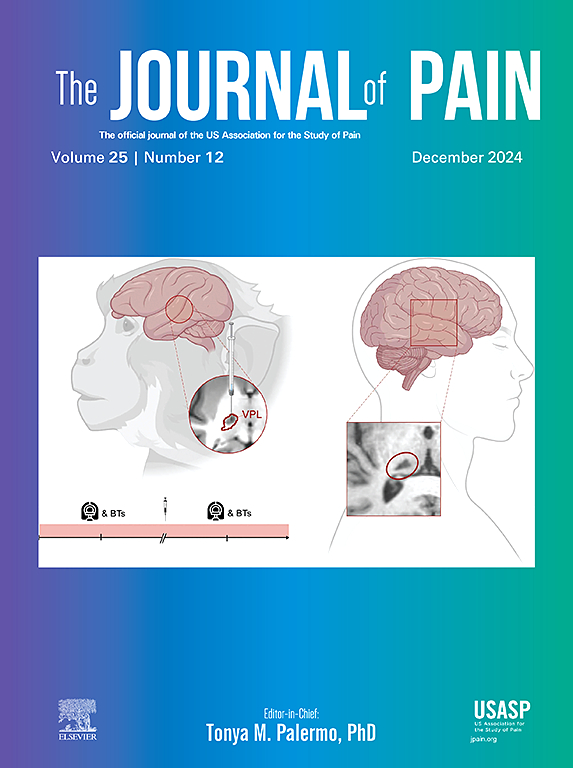Angiotensin II type 1 receptor activation induces dorsal horn capillary constriction and pain hypersensitivity
IF 4
2区 医学
Q1 CLINICAL NEUROLOGY
引用次数: 0
Abstract
Vascular disturbance is a key factor in the development of neurological disease, with reduced integrity of the capillary network in the dorsal horn implicated in activation of nociceptive neural circuits and induction of pain states. Pericytes regulate capillary health and tone, with pericyte dysfunction in cerebral tissue associated with neurodegenerative disorders. Our work demonstrates that spinal cord nociceptive processing is influenced by angiotensin II type 1 (AT1) receptor mediated capillary constriction. Intravital imaging of the mouse spinal cord demonstrated angiotensin II induced cessation of spinal cord capillary perfusion. Intrathecal administration of angiotensin II induced narrowing of capillary diameter, which was accompanied by mechanical allodynia and heat hyperalgesia in adult male and female mice. Angiotensin II mediated reduction of spinal cord blood flow and pericyte activation, was prevented by AT1 receptor inhibition via losartan treatment. Losartan prevented angiotensin II induced pain. Integrity of dorsal horn capillary endothelium was protected by co-treatment with losartan preventing angiotensin II induced loss of CD31 immunoreactivity. This investigation demonstrates that AT1 regulates the dorsal horn capillary network and is fundamental in modulating nociceptive processing and perception of pain. Here we identify a novel cellular and mechanistic target for the induction of pain hypersensitivity.
Perspective
Intrathecally delivered Angiotensin II induced mechanical and heat hypersensitivity in male and female mice. Capillary constriction in the dorsal horn was induced by Angiotensin II treatment and led to degeneration of the endothelium. Angiotensin II induced pericyte activation was Angiotensin II type 1 receptor dependent.
求助全文
约1分钟内获得全文
求助全文
来源期刊

Journal of Pain
医学-临床神经学
CiteScore
6.30
自引率
7.50%
发文量
441
审稿时长
42 days
期刊介绍:
The Journal of Pain publishes original articles related to all aspects of pain, including clinical and basic research, patient care, education, and health policy. Articles selected for publication in the Journal are most commonly reports of original clinical research or reports of original basic research. In addition, invited critical reviews, including meta analyses of drugs for pain management, invited commentaries on reviews, and exceptional case studies are published in the Journal. The mission of the Journal is to improve the care of patients in pain by providing a forum for clinical researchers, basic scientists, clinicians, and other health professionals to publish original research.
 求助内容:
求助内容: 应助结果提醒方式:
应助结果提醒方式:


